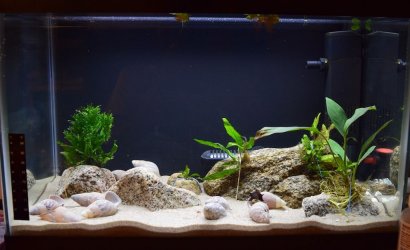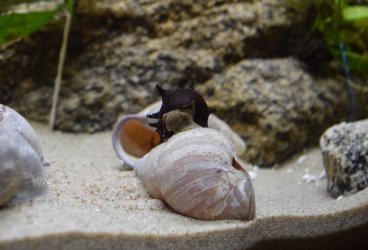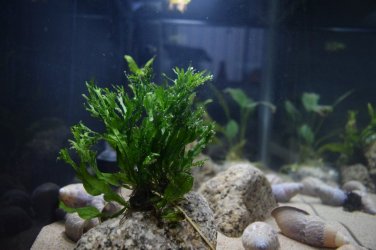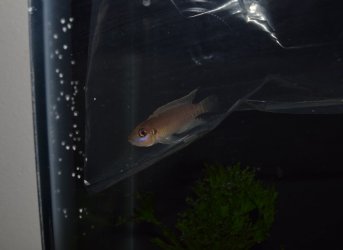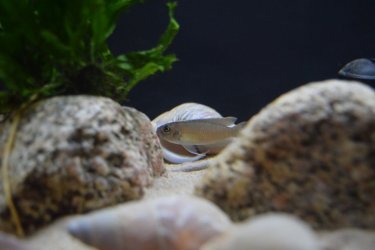threecharacters
Fish Fanatic
My 10 gallon Shelldweller species tank. The tank has been set up for 3ish weeks. I cycled with Dr. Tim's Ammonia Chloride. According to the water reading, it's nearly ready for fish. The current water params are,
pH: 8.0
gH: 12 dH
Ammonia: 0-0.25 ppm (I have trouble telling if there is no Ammonia or not)
Nitrite: 0 ppm
Nitrate: 10-20 ppm
I've been boosting the gH above tap (4 dH) with Equilibrium, the snail shells in the tank, and the play sand. I added some crushed coral today with the hope that I won't have to add quite as much Equilibrium all the time. This will also hopefully raise the pH a bit. Can a high gH and pH harm the plants?
I plan to add fish in a 2-3 days. I want the tank to stay cycled until then. Do I need to add more ammonia to maintain the cycle or the bacteria be OK for a few days without any ammonia? If I do add more ammonia, I will undoubtedly need to make a few water changes before I get fish. Thus, the water in the tank will be less aged. Will this be a problem?
The plants in the tank are Java fern and Anubias congensis currently rubber banded to rocks. Hopefully they will finish attaching soon and I can remove the rubber bands. It seems like it's taking them a while to attach. How long does it typically take?
The only inhabitant is a Pagoda snail I picked up today. It seems happy enough roaming around out of its shell. Because the tank is so young with little algae, should I feed it blanched kale or would fish food be better?
I plan to stock with Neolamprologus brevis. I'll update when they're in the tank.
pH: 8.0
gH: 12 dH
Ammonia: 0-0.25 ppm (I have trouble telling if there is no Ammonia or not)
Nitrite: 0 ppm
Nitrate: 10-20 ppm
I've been boosting the gH above tap (4 dH) with Equilibrium, the snail shells in the tank, and the play sand. I added some crushed coral today with the hope that I won't have to add quite as much Equilibrium all the time. This will also hopefully raise the pH a bit. Can a high gH and pH harm the plants?
I plan to add fish in a 2-3 days. I want the tank to stay cycled until then. Do I need to add more ammonia to maintain the cycle or the bacteria be OK for a few days without any ammonia? If I do add more ammonia, I will undoubtedly need to make a few water changes before I get fish. Thus, the water in the tank will be less aged. Will this be a problem?
The plants in the tank are Java fern and Anubias congensis currently rubber banded to rocks. Hopefully they will finish attaching soon and I can remove the rubber bands. It seems like it's taking them a while to attach. How long does it typically take?
The only inhabitant is a Pagoda snail I picked up today. It seems happy enough roaming around out of its shell. Because the tank is so young with little algae, should I feed it blanched kale or would fish food be better?
I plan to stock with Neolamprologus brevis. I'll update when they're in the tank.


